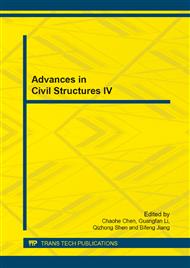p.631
p.637
p.642
p.648
p.653
p.659
p.663
p.667
p.671
Comparison Analysis of Evaluation Criterions for Vibration Serviceability Induced by Wind Load
Abstract:
Vibration serviceability under wind load is always one of the crucial problems for the structural design of high-rising buildings. The most often used evaluation criterions in the world are compared and analyzed systematically in the paper. The features and shortcomings are pointed out, and some advices are proposed. The research can provide references for the improvement of evaluation criterion in China and vibration serviceability evaluation for high-rising buildings.
Info:
Periodical:
Pages:
653-658
Citation:
Online since:
July 2014
Authors:
Keywords:
Price:
Сopyright:
© 2014 Trans Tech Publications Ltd. All Rights Reserved
Share:
Citation:


